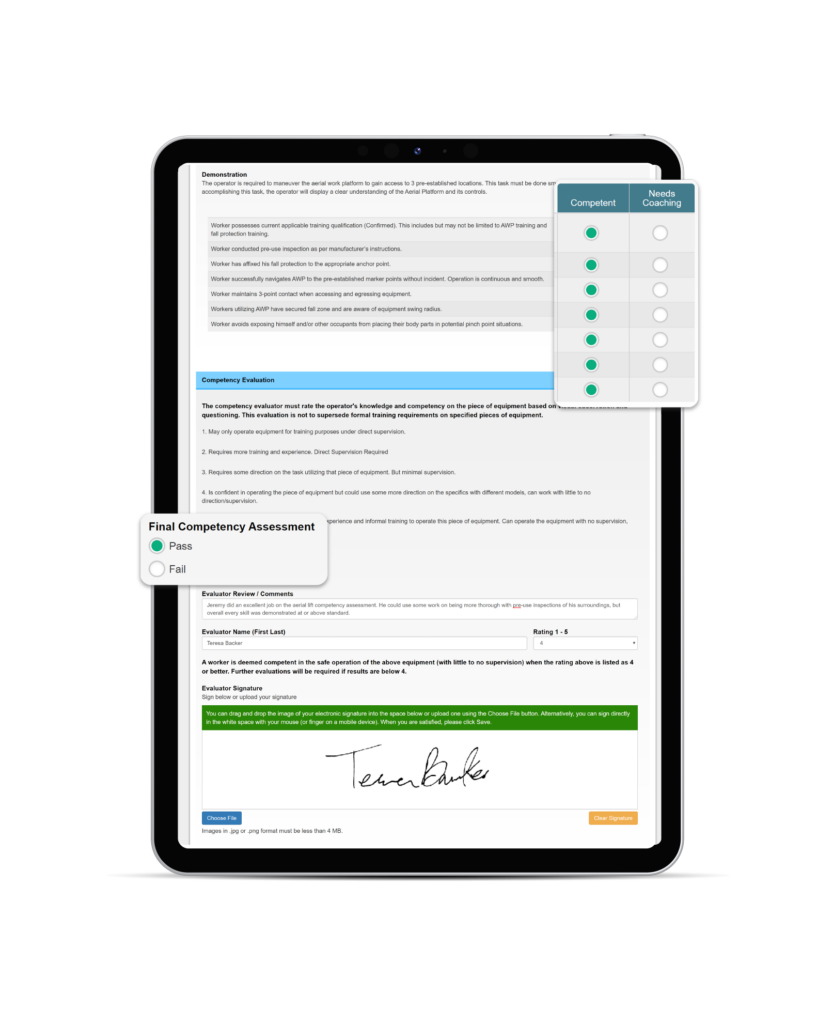
What is EHS and Why is it Important?
Environment, Health, and Safety (EHS) is a critical aspect of every business or organization. It encompasses a wide range of activities that are aimed at promoting workplace safety, protecting the environment, and ensuring the health and well-being of employees. In this blog, we will explore what EHS is, the role of an EHS manager, EHS compliance, EHS management software, and the importance of having an EHS system and procedures in place.
Explore this article:
- What is EHS?
- What is an EHS manager?
- EHS Management Software
- EHS Compliance
- What is EHS Management?
- EHS Procedures
- EHS Summarized
What is EHS?
EHS is an abbreviation that stands for Environment, Health, and Safety. This term is used to describe the processes and procedures that companies implement to ensure that their employees are safe, their operations do not have any adverse effects on the environment, and that the workplace is free from hazards that could affect the health and well-being of their employees.
What is an EHS manager?
An EHS manager is an individual who is responsible for overseeing and managing the EHS programs of an organization. This person is responsible for ensuring that the company’s operations are in compliance with local, state, and federal regulations, and that the company is taking proactive steps to mitigate any potential risks to the environment or the health and safety of their employees.
EHS Management Software
EHS management software is a tool that companies use to manage and monitor their EHS programs. This software is designed to help companies track incidents, manage risks, and ensure compliance with regulations. EHS management software can also be used to generate reports, track progress, and identify areas where improvements are needed.
EHS management software is a critical tool for companies looking to manage and monitor their EHS programs effectively. This software is designed to help companies track incidents, manage risks, ensure compliance with regulations, and improve overall EHS performance.
EHS management software provides companies with a range of features and benefits, including:
- Centralized Data Management: EHS management software enables companies to store all of their EHS data in one centralized location, making it easier to access and analyze. This data includes incident reports, risk assessments, and compliance documentation.
- Real-Time Monitoring: EHS management software provides real-time monitoring of EHS performance, allowing companies to track their progress towards EHS goals and identify areas that need improvement.
- Automated Reporting: EHS management software can generate reports on EHS performance automatically, eliminating the need for manual data entry and analysis.
- Customizable Dashboards: EHS management software allows companies to create customizable dashboards that provide a snapshot of their EHS performance, making it easier to identify trends and track progress.
- Streamlined Compliance: EHS management software can help companies streamline compliance with EHS regulations by providing a framework for managing and tracking compliance requirements.
- Increased Efficiency: EHS management software can help companies increase efficiency by automating routine tasks, reducing paperwork, and improving collaboration among employees.
- Improved Risk Management: EHS management software can help companies identify and manage potential risks, minimizing the likelihood of incidents and accidents.

One example of how EHS management software can benefit companies is in incident reporting. EHS management software can automate the process of incident reporting, making it easier for employees to report incidents and enabling companies to respond to them more quickly. This can help companies identify trends in incident reporting, improve their risk management strategies, and ultimately prevent future incidents from occurring.
Another example is in compliance management. EHS management software can help companies ensure compliance with EHS regulations by providing a framework for managing and tracking compliance requirements. This can help companies avoid fines and legal liabilities resulting from non-compliance.
In conclusion, EHS management software is a critical tool for companies looking to manage and monitor their EHS programs effectively. With features such as centralized data management, real-time monitoring, automated reporting, customizable dashboards, streamlined compliance, increased efficiency, and improved risk management, EHS management software can help companies achieve their EHS goals, minimize the likelihood of incidents and accidents, and avoid fines and legal liabilities.
EHS Compliance Defined by CCOHS
EHS compliance is a critical aspect of any business or organization, as failure to comply with environmental, health, and safety regulations can result in significant fines and legal liabilities, as well as damage to a company’s reputation. The Canadian Centre for Occupational Health and Safety (CCOHS) provides a wealth of resources and information on EHS compliance, offering guidance and support to businesses in Canada and around the world.
One of the key aspects of EHS compliance is understanding and adhering to relevant regulations and standards. In Canada, for example, the Canadian Environmental Protection Act, the Canadian Occupational Health and Safety Regulations, and the Transportation of Dangerous Goods Regulations all establish requirements for businesses to ensure the safety of their employees and the environment. Failure to comply with these regulations can result in significant fines and legal liabilities.
To comply with EHS regulations, businesses must establish effective policies and procedures, provide training and education to employees, and regularly monitor and evaluate their EHS programs. The CCOHS recommends that businesses conduct regular risk assessments to identify potential hazards, establish emergency procedures, and develop and implement policies to mitigate risks and prevent accidents.
For example, the CCOHS provides guidance on EHS compliance for businesses that handle hazardous chemicals. Under the Canadian Hazardous Products Act, businesses that produce or import hazardous products must ensure that these products are properly labeled and that Material Safety Data Sheets are available to employees who handle them. Failure to comply with these regulations can result in significant fines and legal liabilities.
Another example of EHS compliance is the management of workplace noise. The Canadian Occupational Health and Safety Regulations establish limits on the amount of noise to which employees can be exposed, and businesses are required to monitor noise levels, provide hearing protection where necessary, and take steps to reduce noise exposure.
In conclusion, EHS compliance is an essential aspect of any business or organization. By understanding and adhering to relevant regulations and standards, establishing effective policies and procedures, and regularly monitoring and evaluating their EHS programs, businesses can protect the safety of their employees and the environment, reduce legal liabilities and reputational damage, and ultimately contribute to a safer and healthier workplace. The CCOHS provides a wealth of resources and guidance to help businesses comply with EHS regulations, and businesses should take advantage of these resources to ensure that they are operating in a safe, responsible, and compliant manner.

What is EHS Management?
EHS management is the process of managing the environment, health, and safety risks of an organization. This process involves identifying potential hazards, developing policies and procedures to address those hazards, and monitoring compliance with those policies and procedures.
What is an EHS System?
An EHS system is a comprehensive set of policies, procedures, and practices that a company uses to manage and monitor its environment, health, and safety risks. An EHS system typically includes safety training, incident reporting, risk assessments, emergency preparedness, and other related activities.
EHS Procedures
EHS procedures are a set of step-by-step instructions that detail how to carry out specific EHS-related tasks. These procedures are designed to ensure that employees understand the steps that need to be taken to perform tasks safely and to minimize the risk of accidents or incidents.
EHS procedures are a critical component of any EHS system, as they provide a framework for employees to follow to ensure that their work is carried out safely and in compliance with local, state, and federal regulations. These procedures should be designed to cover all aspects of EHS, from workplace safety to environmental protection, and should be reviewed and updated regularly to reflect changes in regulations or new information.
One key area of EHS procedures is workplace safety. This can include procedures for using machinery, handling hazardous materials, working at heights, or entering confined spaces. For example, a manufacturing company might have EHS procedures for using heavy machinery that include conducting a pre-use inspection, wearing the appropriate protective gear, and following a set of safety rules when operating the machinery. Similarly, a construction company might have EHS procedures for working at heights that include wearing a safety harness, using a safety net or guardrail, and following specific procedures for accessing the worksite.
Another area where EHS procedures are essential is in environmental protection. These procedures should cover topics such as waste management, spill response, and pollution prevention. For example, a chemical company might have EHS procedures for storing, handling, and disposing of hazardous waste. These procedures would detail the steps that employees need to take to safely transport the waste to a designated storage area and ensure that it is properly labeled and secured to prevent spills or leaks.
In addition to workplace safety and environmental protection, EHS procedures can also cover topics such as emergency response, incident reporting, and training requirements. For example, a company might have EHS procedures for responding to a fire, which would include detailed instructions for evacuating the building, contacting emergency services, and using fire extinguishers. Incident reporting procedures might include steps for employees to report accidents or near-misses to their supervisors, while training requirements might specify the types of EHS training that employees need to complete and how often it should be renewed.
EHS procedures are an essential component of any EHS program, providing a clear framework for employees to follow to ensure their work is carried out safely and in compliance with regulations. From workplace safety to environmental protection, emergency response, and incident reporting, EHS procedures cover a wide range of topics, and companies must ensure that they are regularly reviewed and updated to reflect changes in regulations or new information. By prioritizing EHS procedures, companies can help protect their employees, the environment, and their bottom line, and demonstrate their commitment to responsible business practices.

EHS Summarized
EHS is a critical aspect of every business or organization, and it is essential to have an EHS system and procedures in place to ensure the safety and well-being of employees, protect the environment, and comply with regulations. Having an EHS manager, EHS compliance, and EHS management software in place can also help companies manage their EHS programs more effectively and efficiently. By prioritizing EHS, companies can help ensure that they are protecting their employees, the environment, and their bottom line.






























